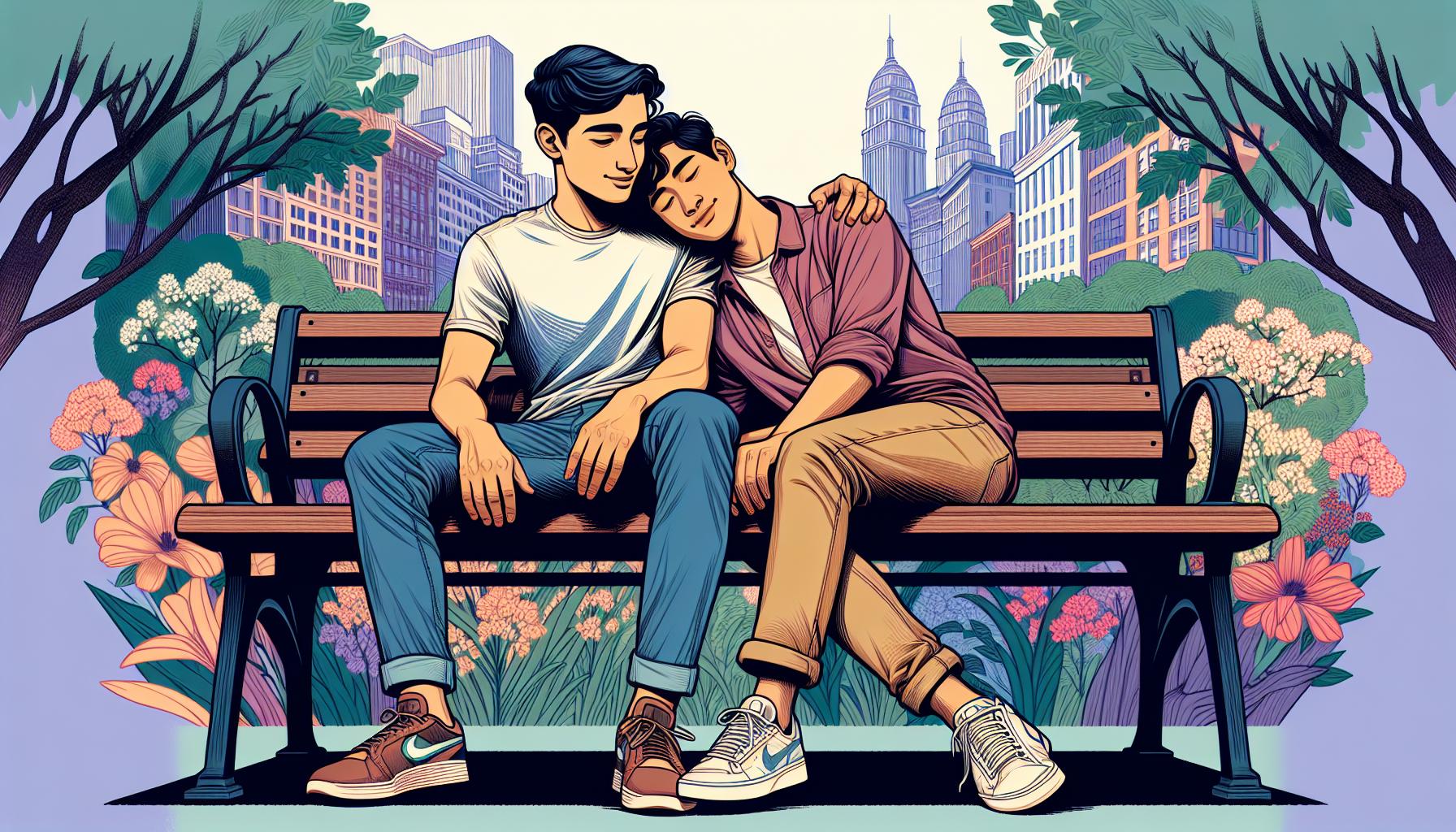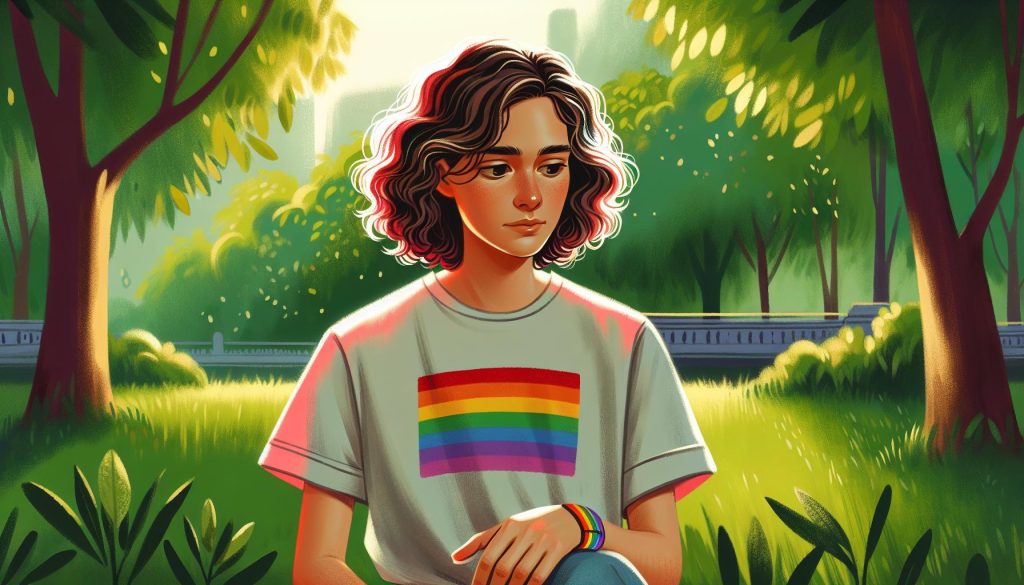Internalized homophobia represents a complex psychological phenomenon where LGBTQ+ individuals absorb and direct society’s negative attitudes about homosexuality toward themselves. This internal struggle often leads to self-doubt, anxiety, and depression, affecting personal relationships and overall well-being.
Despite increasing social acceptance, many LGBTQ+ people still grapple with deep-seated negative beliefs about their sexual orientation. These feelings typically stem from cultural, religious, or societal pressures experienced during formative years. Research shows that internalized homophobia can manifest in various ways, from denial of one’s identity to projection of negativity toward other LGBTQ+ individuals.
Understanding Internalized Homophobia
Internalized homophobia manifests when LGBQ individuals absorb and direct negative societal attitudes toward themselves. This psychological pattern creates internal conflicts between one’s authentic identity and internalized prejudices.
Common Signs and Manifestations
- Avoiding LGBQ space, activities, events
- Rejecting potential romantic relationships with same-sex partners
- Expressing discomfort around openly LGBQ individuals
- Using derogatory language about LGBQ people
- Attempting to “pass” as heterosexual in social situations
- Experiencing shame or guilt about same-sex attractions
- Seeking conversion therapy or religious interventions
- Engaging in high-risk behaviors or substance abuse
- Religious Upbringing: Exposure to faith-based condemnation of homosexuality during formative years
- Cultural Values: Traditional societal norms emphasizing heterosexual relationships
- Family Dynamics: Growing up in households expressing homophobic attitudes
- Educational Environment: Experiencing bullying discrimination in school settings
- Media Representation: Limited or negative portrayals of LGBQ individuals
- Political Climate: Living in regions with anti-LGBQ legislation policies
- Peer Pressure: Facing social exclusion stigma from friend groups
- Historical Context: Coming of age during periods of heightened homophobia
The Impact on Mental Health and Relationships

Internalized homophobia creates significant psychological distress, affecting both mental well-being and interpersonal relationships. Research demonstrates a direct correlation between internalized homophobia and various mental health challenges, along with difficulties in forming meaningful connections.
Depression and Anxiety
Individuals experiencing internalized homophobia show elevated rates of depression and anxiety symptoms. Studies indicate that higher levels of internalized homophobia correlate with:
- Increased depressive episodes in older LGBTQ+ populations
- Persistent anxiety about social situations
- Heightened stress responses in daily interactions
- Negative self-talk patterns
- Reduced self-esteem markers
Difficulty Forming Intimate Connections
Internalized homophobia creates distinct barriers to developing and maintaining intimate relationships:
- Avoidance of emotional vulnerability with potential partners
- Reluctance to display affection in public spaces
- Hesitation in discussing relationship status with family or friends
- Self-sabotage of promising romantic connections
- Difficulty accepting genuine interest from potential partners
- Resistance to long-term commitment opportunities
- Challenges in expressing authentic sexual desires
- Limited participation in LGBTQ+ social circles
| Impact Area | Percentage Affected | Study Year |
|---|---|---|
| Depression Symptoms | 73% | 2021 |
| Relationship Avoidance | 65% | 2021 |
| Social Anxiety | 58% | 2021 |
How Society and Culture Perpetuate Self-Stigma

Societal structures play a significant role in reinforcing internalized homophobia through pervasive heterosexist norms and negative messaging about LGBTQ+ identities. Cultural institutions systematically perpetuate self-stigma through various channels and social systems.
Religious and Family Influences
Religious institutions promote traditional values that often reject same-sex relationships, creating deep-rooted conflicts for LGBTQ+ individuals raised in faith communities. Traditional family structures emphasize heterosexual relationships as the only acceptable model, leading to the following:
- Rejection from family members after coming out
- Pressure to conform to heterosexual norms
- Limited acceptance conditioned on hiding one’s identity
- Religious-based conversion therapy practices
- Exclusion from family events and traditions
- Loss of spiritual community support
Media Representation
Media portrayals shape public perception and self-image through both representation and erasure of LGBTQ+ experiences:
- Limited visibility in mainstream entertainment
- Stereotypical characterizations of gay characters
- Adverse plot outcomes for LGBTQ+ storylines
- Misrepresentation of same-sex relationships
- Over-emphasis on tragic narratives
- Absence of diverse LGBTQ+ role models
- Heteronormative advertising and marketing
The continuous exposure to these messages creates a feedback loop where societal prejudices become internalized, reinforcing negative self-perception among LGBTQ+ individuals. Cultural institutions normalize heterosexuality while presenting queerness as deviant or problematic, contributing to ongoing cycles of self-stigma.
Breaking Free From Internalized Homophobia

Breaking free from internalized homophobia involves acknowledging negative self-perceptions and actively working to replace them with self-acceptance. This process requires deliberate effort, support, and consistent practice of self-affirming behaviors.
Self-Acceptance Strategies
Developing self-acceptance starts with recognizing and challenging internalized negative beliefs:
- Practice positive self-talk by replacing critical thoughts with affirming messages
- Engage in mindfulness and meditation to observe thoughts without judgment
- Read LGBTQ+ literature featuring diverse experiences and positive representations
- Challenge heteronormative assumptions in daily interactions
- Create boundaries with individuals or environments that reinforce negative self-perceptions
- Celebrate small victories in the journey toward self-acceptance
- Document personal growth through journaling or creative expression
Finding Support and Community
Building connections with affirming individuals and spaces creates a foundation for healing:
- Join LGBTQ+ support groups either in-person or online
- Connect with LGBTQ+ community centers that offer counseling services
- Participate in Pride events and LGBTQ+-focused social activities
- Find an LGBTQ+-affirming therapist who specializes in internalized homophobia
- Build relationships with other LGBTQ+ individuals who model self-acceptance
- Engage with social media accounts and online communities that promote positive LGBTQ+ content
- Attend workshops focused on LGBTQ+ identity development and empowerment
- Create chosen family networks with supportive individuals who validate the identity
| Outcome | Improvement Rate |
|---|---|
| Depression Reduction | 65% |
| Increased Self-Esteem | 73% |
| Better Social Connection | 82% |
Professional Help and Resources

Professional support plays a vital role in addressing internalized homophobia through specialized therapeutic approaches and community resources. Mental health professionals offer targeted interventions, while LGBTQ+ organizations provide essential support networks.
Therapy Options
LGBTQ-affirming therapy provides specialized mental health support for individuals dealing with internalized homophobia. Licensed therapists employ several evidence-based approaches:
- Cognitive Behavioral Therapy (CBT) focuses on identifying negative thought patterns about sexual orientation
- Individual psychotherapy addresses deep-seated shame and self-acceptance challenges
- Group therapy creates safe spaces for sharing experiences with others facing similar struggles
- Trauma-informed counseling helps process past experiences of discrimination or rejection
- Family therapy supports both individuals and their loved ones through the coming-out process
- The Trevor Project provides 24/7 crisis intervention services via phone, chat or text
- PFLAG maintains 400+ chapters across the US, offering peer support groups and educational programs
- Human Rights Campaign connects individuals with local LGBTQ-affirming healthcare providers
- GLSEN supports LGBTQ+ youth through education advocacy and school-based programs
- Gay & Lesbian Medical Association maintains a database of LGBTQ-competent medical professionals
- LGBT community centers deliver direct services, including:
- Mental health counseling
- Support groups
- Social activities
- Career Resources
- Legal assistance
- Health services
Bottom Line
Breaking free from internalized homophobia is a deeply personal journey that requires patience, understanding, and support. While the path to self-acceptance can be challenging, the growing availability of resources and support systems offers hope for those struggling with negative self-perceptions.
Through professional help, community support, and personal growth strategies, LGBTQ+ individuals can work towards embracing their authentic selves. The statistics show that with the proper backing and dedication, many people successfully overcome internalized homophobia and build fulfilling lives filled with genuine connections and self-acceptance.
Recovery isn’t just possible – it’s happening every day as more LGBTQ+ individuals find the courage to challenge internalized negative beliefs and embrace their true identity.



